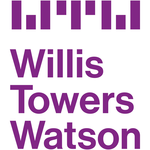Description

dropthought

Willis Towers Watson Employee Engagement
Comprehensive Overview: dropthought vs Willis Towers Watson Employee Engagement
Dropthought and Willis Towers Watson are two distinct entities offering solutions geared towards employee engagement, yet they serve somewhat different functions within this space. Here is an overview of both:
Dropthought
a) Primary Functions and Target Markets:
Dropthought is a feedback platform primarily focused on real-time data collection and sentiment analysis. Its core functionality revolves around capturing employee and customer feedback to help organizations enhance engagement and satisfaction. The platform is designed to be intuitive and facilitates seamless feedback loops through various channels such as mobile, web, and integrated systems.
Target Market:
- Primarily targets mid-sized to large enterprises.
- Sectors such as retail, hospitality, healthcare, and other service-intensive industries where customer and employee satisfaction are pivotal.
b) Market Share and User Base:
Dropthought, being a specialized tool for real-time feedback, caters to a niche segment of the market. Unlike some larger and more established players in employee engagement, it may not have a high market share in comparison, but it holds significant value in industries where immediate feedback and rapid response systems are critical. Specific user base figures may not be publicly available, but its strength lies in deployment in sectors with a strong need for agile feedback systems.
c) Key Differentiating Factors:
- Real-Time Feedback: One of the hallmark features of Dropthought is its ability to capture real-time feedback, allowing organizations to act immediately on critical issues.
- AI-driven Sentiment Analysis: Utilizes artificial intelligence to provide deep insights into sentiment trends, helping management understand the emotional tone of feedback.
- Ease of Use and Integration: Known for its user-friendly interface and capability to integrate with existing systems to streamline workflows.
Willis Towers Watson Employee Engagement
a) Primary Functions and Target Markets:
Willis Towers Watson offers a range of services and platforms designed to enhance employee engagement and workplace effectiveness. Their employee engagement solutions are comprehensive, focusing on survey implementation, data analysis, and actionable insights to drive organizational growth.
Target Market:
- Large enterprises and multinational corporations.
- Operates across various industries including finance, manufacturing, technology, and healthcare, providing tailored solutions for complex organizational structures.
b) Market Share and User Base:
Willis Towers Watson is among the prominent players in the global market for employee engagement solutions. It has a substantial market share with a broad user base, counting numerous Fortune 500 companies among its clients. Its position is strengthened by its comprehensive suite of employee engagement tools and its longstanding reputation in the consulting and professional services industry.
c) Key Differentiating Factors:
- Comprehensive Suite: Offers a wide range of tools and advisory services not only focused on engagement surveys but also encompassing talent management, HR strategy, and risk management.
- Industry Expertise: Backed by extensive research and years of experience, providing insights and best practices tailored to specific industry needs.
- Global Reach: Ability to serve large, global companies with diverse workforces, supported by a robust global network.
- Consulting and Advisory Services: Unlike more narrowly focused platforms, Willis Towers Watson provides deep consulting expertise to assist clients in interpreting data and implementing changes.
Conclusion
Both Dropthought and Willis Towers Watson offer valuable solutions for enhancing employee engagement, but they cater to different market needs and organizational sizes. Dropthought focuses on real-time feedback and agility, making it suitable for dynamic environments, whereas Willis Towers Watson provides comprehensive and strategic engagement solutions tailored for large enterprises with complex needs. Each has its strengths based on the nuances of feedback needs and organizational objectives.
Contact Info

Year founded :
2011
+1 855-437-6776
Not Available
United States
http://www.linkedin.com/company/dropthought-inc

Year founded :
Not Available
Not Available
Not Available
Not Available
Not Available
Feature Similarity Breakdown: dropthought, Willis Towers Watson Employee Engagement
Dropthought and Willis Towers Watson Employee Engagement are both platforms designed to help organizations gather insights from employees, focusing on engagement and feedback collection. Here's a breakdown of their features and how they compare:
a) Core Features in Common
-
Employee Feedback Collection:
- Both platforms offer tools for collecting feedback from employees, including surveys and polls.
-
Analytics and Reporting:
- They provide analytics capabilities to interpret the data collected from surveys, helping organizations identify trends and areas for improvement.
-
Customizable Surveys:
- Users can design and customize surveys to suit their organizational needs, selecting from various question types and templates.
-
Real-time Data Visualization:
- Both solutions offer real-time dashboards and visualization tools to help stakeholders quickly understand engagement metrics.
-
Integration Capabilities:
- They provide integration options with other tools and platforms, such as HR systems, to streamline data flow and enhance functionality.
b) Comparison of User Interfaces
-
Dropthought:
- Known for having a user-friendly and intuitive interface. It focuses on simplicity and ease of navigation which makes it accessible to users with various levels of technical expertise.
-
Willis Towers Watson Employee Engagement:
- Often seen as more complex, reflecting the depth of its analytics capabilities. The interface might cater to users who are more experienced with data interpretation and HR analytics.
c) Unique Features
-
Dropthought:
-
AI-Powered Sentiment Analysis: Dropthought often leverages AI to provide sentiment analysis, allowing companies to understand the emotional tone of the feedback.
-
Actionable Insights: The platform emphasizes converting feedback into actionable insights, making it easier for organizations to create follow-up tasks.
-
-
Willis Towers Watson Employee Engagement:
-
Benchmarking: Offers robust benchmarking capabilities, allowing organizations to compare their engagement data against industry standards or peer groups.
-
Comprehensive Engagement Model: Provides a highly detailed model of engagement with advanced analytics, which can delve deeper into specific drivers of engagement linked to business outcomes.
-
In conclusion, while both platforms offer essential features for employee engagement and feedback, Dropthought tends to focus on ease of use and AI-driven insights, making it suitable for varied users, whereas Willis Towers Watson provides a feature-rich platform ideal for in-depth analysis and benchmarking. The choice between these platforms may depend on an organization's specific needs for simplicity versus advanced analytic capabilities.
Features

User-Friendly Interface
Advanced Analytics
Real-time Feedback Collection
Customizable Survey Templates
Multichannel Distribution

Action Planning
Employee Surveys
Engagement Insights
Best Fit Use Cases: dropthought, Willis Towers Watson Employee Engagement
Dropthought and Willis Towers Watson Employee Engagement are both tools designed to enhance employee engagement and gather insights, but they are suited for different types of businesses and scenarios based on their unique features and offerings. Here's a breakdown of their best fit use cases:
Dropthought:
a) Best Fit Use Cases for Dropthought:
-
Types of Businesses or Projects:
- SMEs and Growing Enterprises: Dropthought is particularly beneficial for small to medium-sized enterprises looking for an intuitive and easy-to-use platform to gather real-time feedback efficiently.
- Project-Based Teams: Companies working on dynamic, short-term projects will find Dropthought useful for capturing immediate reactions and sentiments.
- Customer-Centric Roles: Businesses with a strong focus on customer service and experience may utilize Dropthought to parallel employee feedback with customer feedback initiatives.
-
Industry and Use Case Fit:
- Technology Startups: Where fast feedback loops are integral to operation adjustments.
- Retail Chains: Where immediate employee feedback can help manage customer experience strategies.
- Healthcare: For gathering quick insights from frontline staff about operational efficiencies and patient care.
b) How Dropthought Caters to Industry Verticals or Company Sizes:
- Dropthought is versatile and easily scalable, making it suitable for businesses across various industries like retail, healthcare, and technology startups.
- Its emphasis on real-time feedback and simple integration with existing workflows makes it attractive for companies with limited resources or those requiring swift implementation and decision-making processes.
Willis Towers Watson Employee Engagement:
b) Preferred Scenarios for Willis Towers Watson Employee Engagement:
-
Types of Businesses or Projects:
- Large Enterprises and Corporations: Ideal for large organizations that require comprehensive insights across various departments and geographies.
- Corporates Undergoing Transformation: Companies looking to understand the broader impacts of organizational changes or mergers would benefit from the detailed analytics.
- Businesses Focused on Long-term Strategy: Companies with a strategic emphasis on culture, engagement, and retention.
-
Scenario and Use Case Fit:
- Multinational Corporations: Where it’s crucial to assess and compare engagement across different regions or cultures.
- Banking and Financial Services: For highly regulated industries needing detailed compliance-related engagement metrics.
- Manufacturing and Industrial Companies: To facilitate employee feedback amidst large-scale operations and structures.
d) How Willis Towers Watson Caters to Industry Verticals or Company Sizes:
- This tool specializes in providing in-depth analysis and insights, making it suitable for industries requiring detailed reporting and compliance, such as finance, manufacturing, and global retail companies.
- Larger scale operations benefit from its robust data analytics, standardized surveys, and benchmarking capabilities, which support extensive strategic planning and transformation efforts.
Both Dropthought and Willis Towers Watson Employee Engagement serve unique business needs and complement various strategic goals, whether it be rapid response and adaptability, or thorough analytical assessment and strategic development in employee engagement.
Pricing

Pricing Not Available

Pricing Not Available
Metrics History
Metrics History
Comparing teamSize across companies
Conclusion & Final Verdict: dropthought vs Willis Towers Watson Employee Engagement
Conclusion and Final Verdict for Dropthought vs Willis Towers Watson Employee Engagement
a) Best Overall Value
After evaluating both products, the best overall value depends on the specific needs and context of the organization. Dropthought offers a more agile and user-friendly solution with a focus on real-time feedback, while Willis Towers Watson (WTW) provides a comprehensive and data-driven approach, ideal for large organizations with complex needs.
For small to medium-sized enterprises or those looking for a cost-effective, intuitive platform with robust feedback capabilities, Dropthought may offer the best value. However, for larger organizations that require deep analytical insights and integration with broader organizational strategies, Willis Towers Watson Employee Engagement might provide superior long-term value.
b) Pros and Cons
Dropthought
-
Pros:
- Offers real-time feedback and pulse surveys, which allow for quick action on employee insights.
- User-friendly interface that requires minimal training.
- Cost-effective, which is appealing to small and medium-sized enterprises.
- Customizable feedback tools that can be tailored to specific organizational needs.
-
Cons:
- May lack the depth and sophistication of analytics found in more established platforms.
- Limited integration with wider HR systems compared to competitors.
- Might not cater well to highly complex engagement strategies in large organizations.
Willis Towers Watson Employee Engagement
-
Pros:
- Comprehensive analytics with deep insights into employee engagement data.
- Strong integration capabilities with existing HR frameworks and systems.
- Recognized expertise in employee engagement, backed by a wealth of industry data and benchmarks.
- Tools are designed for tackling complex organizational challenges.
-
Cons:
- Can be more expensive, which may not be justifiable for smaller organizations.
- More complex system that often requires a learning curve or additional training.
- Less nimble in terms of real-time feedback capabilities compared to more specialized tools like Dropthought.
c) Recommendations for Users
-
Assess Organizational Needs:
- Determine the size of your organization and the complexity of your employee engagement requirements. For simpler needs and smaller teams, Dropthought might suffice. For comprehensive analysis and integration with large-scale HR strategies, consider Willis Towers Watson.
-
Budget Considerations:
- Evaluate your budget constraints. If cost is a primary concern, Dropthought offers a more economical choice. However, if budget allows, investing in WTW may yield richer data insights over time.
-
Integration and Support:
- Consider the level of integration and support you require. If your organization uses sophisticated HR systems or requires high-level technical support, Willis Towers Watson may provide a better fit.
-
Trial Options:
- Utilize free trials or demos to get hands-on experience with both platforms. This can aid in understanding user experience and determining which interface better suits your organizational culture and workflow preferences.
In summary, the decision between Dropthought and Willis Towers Watson Employee Engagement should be guided by organizational size, budget, integration needs, and the depth of engagement insights required. Tailor the choice to fit your specific context for the best results.
Add to compare
Add similar companies




